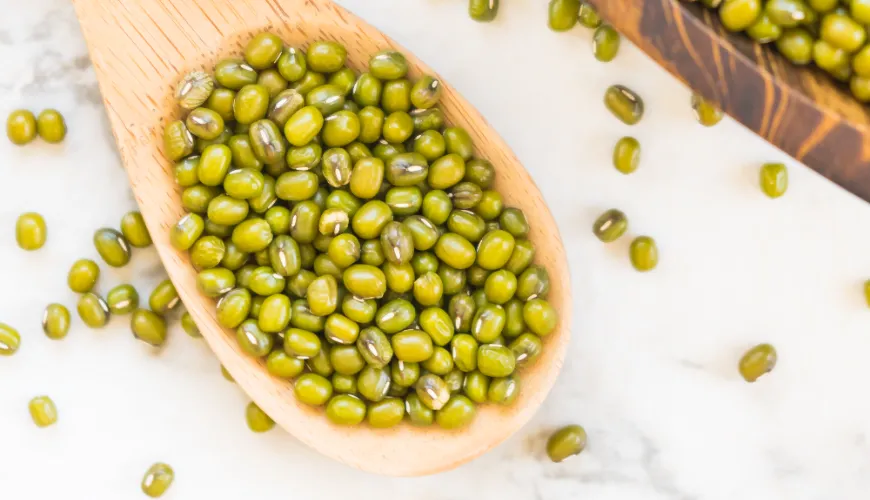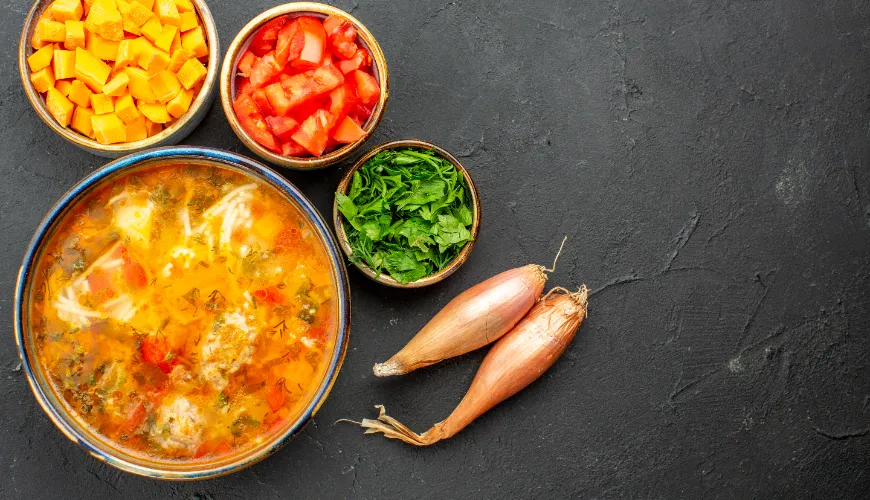
Find out how to sprout nutrient-rich mung beans

How to Sprout Mung Beans?
Sprouted mung beans are becoming increasingly popular today. Not only because of their nutritional value, but also because they are easily accessible and surprisingly simple to sprout. For those looking for ways to incorporate more vitamins and antioxidants into their diet, mung beans are a great option. In this article, we will take a detailed look at what mung beans are, how to sprout them properly, and what benefits they offer.
What is Mung Bean?
Mung beans are small, green legumes originating from India and Southeast Asia, where they have been known for thousands of years. They are a part of traditional Ayurvedic medicine and Eastern cuisines, where they are used not only for their taste but also for their healing properties. Mung beans can be consumed cooked, but their nutritional value dramatically increases when sprouted. Mung bean sprouts are rich in vitamin C, folic acid, iron, potassium, and antioxidants, making them a nutritious addition to various dishes.
How to Sprout Mung Beans
The process of sprouting mung beans is simple and does not require any special equipment. By following these steps, you can have fresh sprouts in just a few days.
-
Preparing and Soaking the Beans: First, select high-quality mung beans, ideally from organic farming. Pour them into a bowl and cover with water. Let the mung beans soak for approximately 8 hours, ideally overnight. This hydrates the seeds, which initiates the sprouting process.
-
Rinsing and Preparing for Sprouting: After soaking, drain the water and rinse the beans thoroughly. This step is important as it removes excess starches and any impurities. Then place them in a container suitable for sprouting – this could be a glass jar with a breathable lid, or a special sprouting container that ensures adequate air circulation.
-
Rinsing During Sprouting: Rinse the mung beans with cold water every day, ideally twice a day. This removes excess moisture and prevents mold growth. After rinsing, gently dry the beans or place them on a slanted surface to allow excess water to drain.
-
Sprouting: In just two to three days, you should see the first sprouts. How long you let the mung beans sprout depends on your preference. Typically, they are left to sprout for 3-5 days, when the sprouts are crunchy and have the ideal length. If you prefer longer sprouts, you can let them grow longer, but it is good to rinse them daily to keep them fresh.
Why Sprout Mung Beans?
Sprouting beans is not just a process that adds crunchiness but also enriches their nutritional value. When we sprout mung beans, the content of vitamins and antioxidants increases, which help protect our body from free radicals. Additionally, sprouts contain enzymes that contribute to better digestion because the sprouting process converts complex starches into simpler sugars.
Sprouted mung beans also contain high levels of folic acid, which is important for proper cell development and is essential for pregnant women. Thanks to their high vitamin C content, mung bean sprouts support the immune system and help the body fight infections. Regular consumption of sprouts can also contribute to improved metabolism and reduced cholesterol levels.
Ways to Use Sprouted Mung Beans in the Kitchen
Sprouted mung beans are a versatile ingredient that you can use in a variety of dishes. Their mild flavor and pleasant crunch make them easy to incorporate into your daily diet. Fresh sprouts can be added to salads, soups, or used as a side dish for main meals. They are great in Asian dishes, where you can use them with soy sauce, sesame oil, and ginger to prepare tasty mixes.
For smoothie lovers, mung bean sprouts are an interesting addition because they provide an extra dose of vitamins and minerals. They can also be part of warm dishes, such as stewed vegetable mixes or Asian stir-fry. In short, sprouted mung beans are a great way to add nutrients to your meals without unnecessary calories.
Sprouted mung beans are a nutritious and tasty ingredient that you can easily incorporate into your diet. Thanks to the simple sprouting process, you can always have fresh sprouts full of vitamins, minerals, and antioxidants at home. Sprouting mung is easy, and its health benefits are invaluable. If you're looking for a way to improve your diet naturally, mung beans are an ideal choice. Now that you know how to sprout mung beans, don't hesitate to try this process yourself. The result will pleasantly surprise you, and your body will thank you for it.

